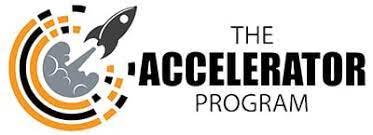Liz Herrera – The Accelerator Program
Liz Herrera – The Accelerator Program | 9.61 GB
The Step By Step Blueprint To Building A Profitable Amazon Store In 30 Days or Less.
.and How to Make Your First Sale in as Little as 7 Days with Little to No Inventory or Money to Invest! HURRY: Before The Price Increases
The Business Analysis Certification Program is aligned with the (Business Analysis Body of Knowledge Guide) BABOK version 3 and has a total of 14 sections that are also presented as individual courses for your convenience.
1. Introduction to Business Analysis. Foundational concepts related to business analysis. First we’re going to look at business analysis and what it is, what a business analyst does, and some of the core concepts related to working in this field. Then we’ll look at some of the key terms, such as stakeholder, requirements, and design.
2. Business Analysis Planning and Monitoring. The tasks in this knowledge area produce documents that direct you as a business analyst throughout a project. These documents include the general approach you’ll take, the plan for engaging stakeholders, and how you’ll manage information, and changes to the requirements.
3. Business Analysis Elicitation and Collaboration. Find out how business analysts identify and reach agreements with stakeholders on requirements. The tasks in this knowledge area describe how you as a business analyst reach a mutual understanding of various types of business analysis information with stakeholders. The activities associated with this task include workshops, surveys, and ad hoc collaboration and conversations.
4. Business Analysis and Requirements Life Cycle Management.
Requirements are the foundation of all your business analysis activities. If the objective of a project is to deliver solutions that best meet requirements, then you’d best keep a close eye on those requirements and the designs that address them. So, we’ll look at what your role is in tracing and maintaining requirements and designs.
5. Business Analysis and Strategy Analysis. It covers everything from assessing the current state of operations, doing some visioning regarding a desired future state, determining what the risks are that will need to be managed, and then coming up with the best strategy for realizing the desired future state.
6. Business Analysis and RADD: Requirements Definition. This course covers the first three tasks, which involve creating a list of requirements and then verifying that they are of sufficient quality to be used for further work. And then, validating them to ensure they deliver benefits to the stakeholders, align with business goals, and align with the objectives of the change.
7. Requirements Analysis and Design Definition. Related to creating a requirements architecture. You develop a set of designs and analyze those to determine where the best value is. The final step is to develop the solution recommendation that represents the best design.
8. Business Analysis and Solution Evaluation. It involves measuring and analysing solution performance as well as identifying limitations within the solution and the enterprise that may be keeping the solution from reaching its full value potential. The final task is to recommend actions to remove the limitations and thereby increase the value of the solution.




